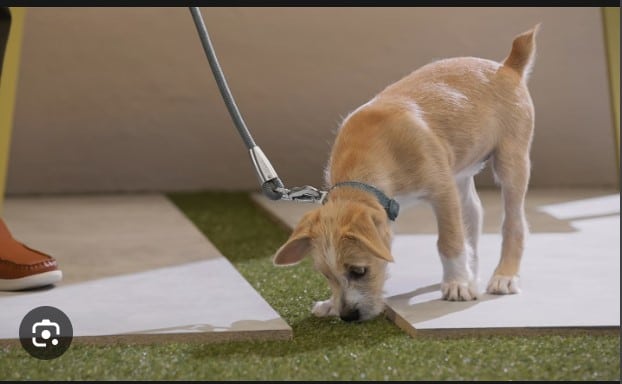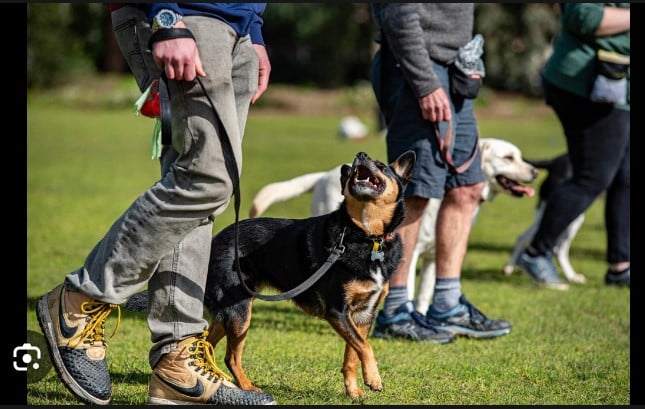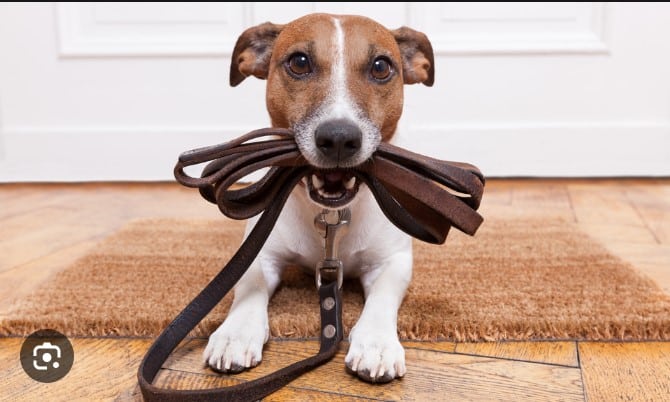Dogs have a natural enthusiasm, which is great when you’re playing fetch, but it can be risky when walking in a busy area. If your dog is not on a leash, it might jump on people, get into fights with other dogs, or run into traffic. That’s why teaching your dog to walk on a leash is very important. In this post, “Training with Puppy Collars: Tips for Leash and Behavior Control”, we teach you all you need to know. We also discussed Important Tips for Leach Training and Basic Techniques to Train Puppy with Collars. As well as Possible Difficulties during Training and Getting a Leash that Fits!
Teaching your puppy to walk on a leash is an important lesson in behavior. The sooner they get used to it, the easier it becomes to train them in various aspects. Having control over your puppy on a leash is not only helpful for outdoor walks but also for housebreaking and other training activities. You can start leash training when your puppy is as young as ten weeks old.
It’s crucial for your dog to learn good behavior early on. Leash training at a young age significantly reduces the chances of them pulling when they are older, making them easier to manage.
Puppies are full of energy and having control over them, both in public and in your yard, ensures their safety. When they are on a leash, you can prevent them from consuming anything harmful, reducing the risk of illness and injury. It also helps protect wildlife from your puppy’s sometimes destructive curiosity.
Being on a leash means you are taking responsibility for your puppy and can prevent them from getting into trouble while in public.
See also: Top 10 Dog Breeds for Families

How To Choose the Right Leach for your Dog
Before you start training your puppies to walk on a leash, it’s important to pick the right gear. There are many options for dog owners nowadays, so it can be a bit overwhelming.
When it comes to choosing a collar, making sure it fits correctly is crucial. If it’s too tight, your dog might feel uncomfortable, but if it’s too loose, there’s a risk of your dog slipping out and running away. As a general rule, if you can comfortably fit two fingers under the collar, it’s a good fit for your dog.
After selecting a collar, you can decide between a standard leash and a retractable one. Retractable leashes are great if you want to give your dog more room to explore. However, standard leashes are usually better for dogs that are still learning to walk on a leash.
Important Tips for Leach Training
These are the very important tips to keep in mind when training your puppy with a leash. We highlighted them in this post on “Training with Puppy Collars: Tips for Leash and Behavior Control”. They include;
Keep training sessions short for the best results.
Focus on smaller, more frequent sessions. You can try doing several 10-minute sessions a day, spread out 15-minute sessions, or have one 30-minute session daily.
See also: The Essential Guide To Dog Ear Cleaner
Start training your dog indoors in a safe and comfortable environment.
If you prefer outdoor training, use a fenced yard that your dog is familiar with. Make sure your dog is comfortable with the harness, leash, and collar you plan to use.

Encourage eye contact during training.
The key is to keep your dog focused on you. Practice walking on and off the leash. Use a clicker, cue word, or another sound to get your dog’s attention. When your dog looks at you upon hearing the sound, reward them with one of their favorite treats. Repeat this process during walks to reinforce the behavior.
Reward your dog for walking beside you.
Use the click and treat method when your dog is in the correct position and direction during the walk. As your dog gets better at this, slowly decrease and eventually stop using treats.
Practice changing directions during walks.
Take a few steps backward, make quick turns, or stop suddenly. Mix these moves and reward your pup for following your lead.
If your dog pulls ahead, stop immediately.
Wait until they take a step back and focus on you before moving forward. Let the pressure from the collar or harness encourage good behavior.
See also: Sick Of Feeding Your Dog? Check Out This Heavy Duty Automatic Dog Feeder
Master these skills both on and off-leash in a safe environment before trying them in more challenging locations.
Start with neighborhood walks and gradually increase the distance while using these methods.

Basic Techniques to Train Puppy with Collars
Once your dog is comfortable with the leash and collar, start practicing walking inside. Even if your dog walks alongside you for just a few steps, it’s progress.
As your puppy gets more used to the leash, try practicing in places with more distractions to improve focus. Begin in controlled spaces like the backyard before moving to more challenging areas like the dog park. Pay attention to your dog’s comfort level; introducing too many distractions too soon might be overwhelming.
Combining loose leash training with obedience commands can promote good behavior during walks. Instructing your dog to sit, stand, or heel while on a leash reinforces your authority and helps prevent pulling and lunging. The Halo Collar is especially helpful for this purpose, using haptic signals to positively reinforce commands.
Before incorporating commands into your training sessions, have a clear goal in mind. Setting an intention, as suggested by Cesar Millan, helps project confidence and authority. Your puppy will recognize dominant behavior, making it more responsive to your commands.
Most importantly, stay calm and composed as your puppy learns. Being prepared for challenges allows you to adapt and respond effectively in the moment.
See also: 10 Effective Puppy Training Tips
Possible Difficulties during Training
Leash training a puppy can be challenging due to certain behaviors. However, there are simple solutions to prevent pulling and biting in even the most unruly puppy.
Pulling
If your dog pulls on the leash, stop moving completely until the leash is slack. Once your dog yields to you, resume walking. Avoid accidentally rewarding this behavior by refraining from giving treats even after the pulling stops.

Biting
For leash biting, use a similar approach. Stop moving, use a treat to get your dog’s attention, and give it a new command like sit or lie down. Then, reward your dog.
When addressing leash training challenges, patience is crucial. Learning a new skill can be frustrating for a dog, and positive encouragement helps keep its spirits up.
See also: Top 8 Indestructible Dog Toys for Chewers
Getting Stuck
If your dog suddenly stops walking, it might be because they’re nervous or want to go in a different direction. Keep encouraging them with praise and treats until they start walking with you again.
Too Energetic
If your puppy is very excited, it can be hard to get them to follow basic commands. Play with them to use up some of that extra energy before you begin leash training. Check our guide on Keeping Your Dog Entertained Indoors for fun games you can play at home.
Get a Leash that Fits!
It’s always a good idea to get high-quality gear from trusted brands. However, one of the most crucial aspects of choosing the right equipment for your puppy is getting the right size.
Never buy gear that’s too big, thinking your puppy will grow into it. Oversized harnesses and collars are unsafe and can cause injuries. Even if it’s just uncomfortable, an ill-fitting harness can make training more challenging for puppies.
A good dog harness is designed to evenly distribute pressure across the dog’s chest, tummy, and back. So, if your puppy pulls on the leash, the impact is spread across their whole body. If the harness is too big, it shifts, and all the pressure is concentrated in one area.
See also: Senior Dog Supplements

Conclusion
Teaching your dog to walk on a leash is really important for every dog owner. By following the steps in this guide, using positive rewards, and choosing the right leash and harness, you can make leash training simple for your dog. Just be patient, stay consistent, and always put your furry friend’s safety first. We have come to the end of this post on “Training with Puppy Collars: Tips for Leash and Behavior Control”. Was this helpful? Let us know in the comments.
